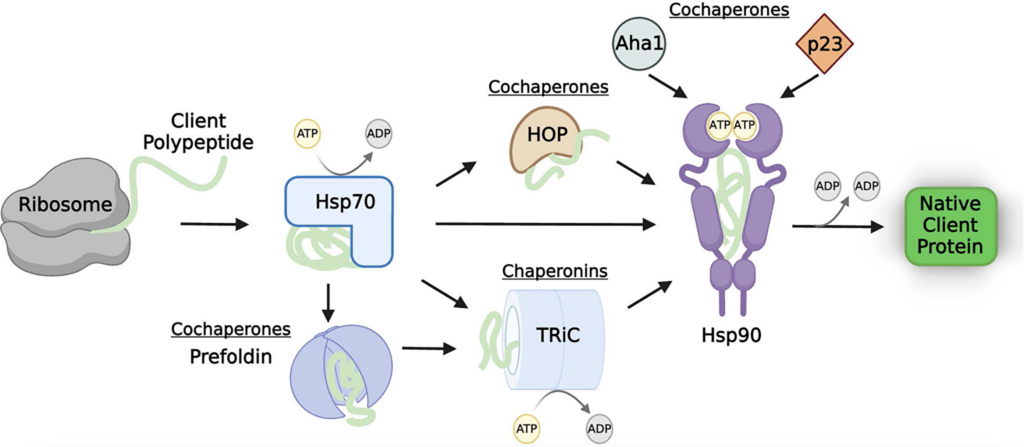Drs. Mehdi Mollapour, Jennifer Heritz, and Sarah Backe from SUNY Upstate Medical University (Syracuse, NY) discuss a review they co-authored that was published by Oncotarget in Volume 15, entitled “Molecular chaperones: Guardians of tumor suppressor stability and function.”
Behind the Study is a series of transcribed videos of researchers elaborating on their oncology-focused research published by Oncotarget. Visit the Oncotarget YouTube channel for more insights from outstanding authors.
—
Hi, I’m Mehdi Mollapour. I’m a professor of urology, biochemistry and molecular biology at Upstate Medical University. I have two members of my lab here, Jennifer Heritz, my graduate student. And Dr. Sarah Backe, she’s my postdoctoral research fellow.
Today, we are here to discuss and give you more insight about a recent review that was published in Oncotarget. We are going to tell you more about how we conceptualized and put this review together. But before that, I want to give you a little background about my lab and my research focus, and what is being carried out in my lab. We are interested in molecular chaperones. These are a group of proteins that collectively regarded as looking after other proteins for their stability and functionality. My lab is also interested in cancers, mainly kidney cancer and breast cancer. We are interested how these tumors are actually being formed and transformed, and also we are looking at therapeutic targets, new therapeutic targets in this type of cancer.
I’m going to let Jennifer, the lead author of this review, to tell you more about how she conceptualized and put this review together. Jennifer.
Thank you. So, yes. My name is Jennifer Heritz. I’m the lead author of “Molecular chaperones: Guardians of tumor suppressor stability and function.” So when you think about tumor suppressors’ role in cancer, you think, okay, suppressing growth. But really the only commonality between all tumor suppressors is really just their name. They each have a different function, different cellular location. All of them do different things. So writing this review from the standpoint of what connects these tumor suppressors together, chaperones. This was unique in that it adds commonality between all tumor suppressors that we describe in the paper, as well as the role of molecular chaperones in cancer themselves.

Additionally, a lot of research has been focused on the role of molecular chaperones stabilizing oncoproteins, thus identifying molecular chaperones as attractive chemotherapeutic targets for anti-cancer therapy. However, looking at molecular chaperones as protecting tumor suppressor function was really a gap in the knowledge that we thought to make a review on to really bring focus to this area of research.
Now, the number of tumor suppressors that are chaperoned by molecular chaperones grows by the day. And, luckily, we have an expert in our own lab that has added to that body of research, Dr. Sarah Backe, and she can tell us a little bit more about that.
Thank you, Jennifer. So my name is Sarah Backe. I did my PhD in Dr. Mollapour’s lab and during that time I had the opportunity to work and focus on co-chaperone proteins, some of which we discuss here in the review because of their importance in maintaining the function of tumor suppressor proteins. Specifically, TSC1, FNIP1 and FNIP2 are HSP90 co-chaperones and these work in concert with HSP90 to stabilize tumor suppressors, TSC2, and folliculin. This is absolutely essential for the function of these tumor suppressors. And as Jennifer wonderfully described in the review, these are not the only examples of which tumor suppressors are chaperoned by molecular chaperones such as HSP90.
We really hope that shedding some light on this and kind of putting this together in a comprehensive manner allows us to refocus in the HSP90 field and the tumor suppressor field and stimulate further conversation about the relationship between molecular chaperones and tumor suppressors.
So I want to say a few last words about our review and collectively about Oncotarget. We thought that Oncotarget was a perfect platform to publish our paper and to disseminate this information to the researchers and to the readers. We have previously published many reports, papers in Oncotarget, meeting reports, conference reports, case studies, manuscripts. It’s a great journal. And the way it’s been structured and the way it’s actually presenting data reviews is very useful for the readers, especially in our field. It really bridges the gap between basic researchers and translational researchers, and that’s what we try to achieve in here: Try to galvanize and hopefully shed more light and stimulate new ideas into this particular area that we felt is underserved and hopefully will stimulate other researchers to continue working on this. Again, we thought, we felt that Oncotarget was the perfect journal, was the best journal to publish this review. Thank you.
Thank you.
Thank you.
Click here to read the full review published by Oncotarget.
—
Oncotarget is a unique platform designed to house scientific studies in a journal format that is available for anyone to read—without a paywall making access more difficult. This means information that has the potential to benefit our societies from the inside out can be shared with friends, neighbors, colleagues and other researchers, far and wide.
For media inquiries, please contact media@impactjournals.com.